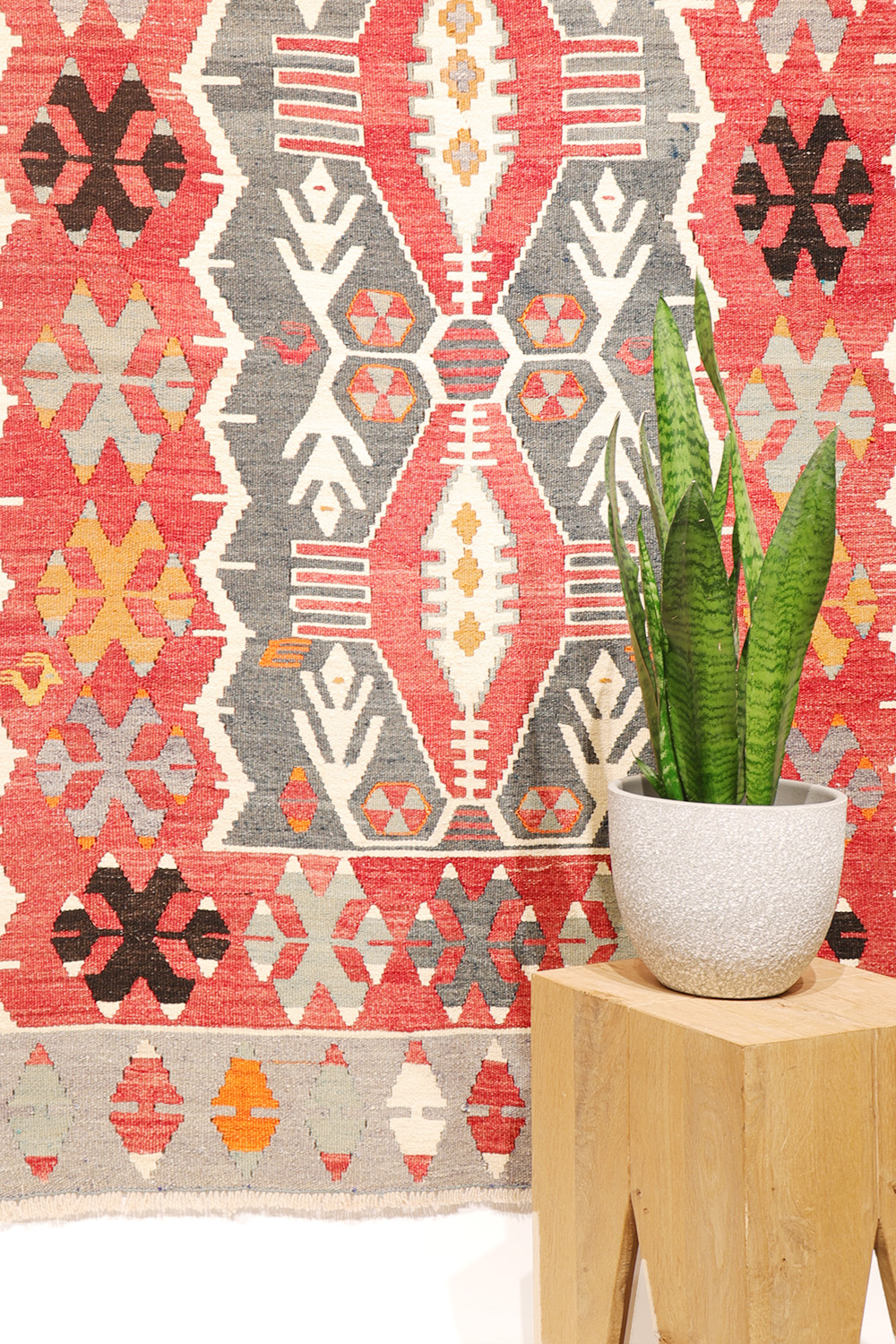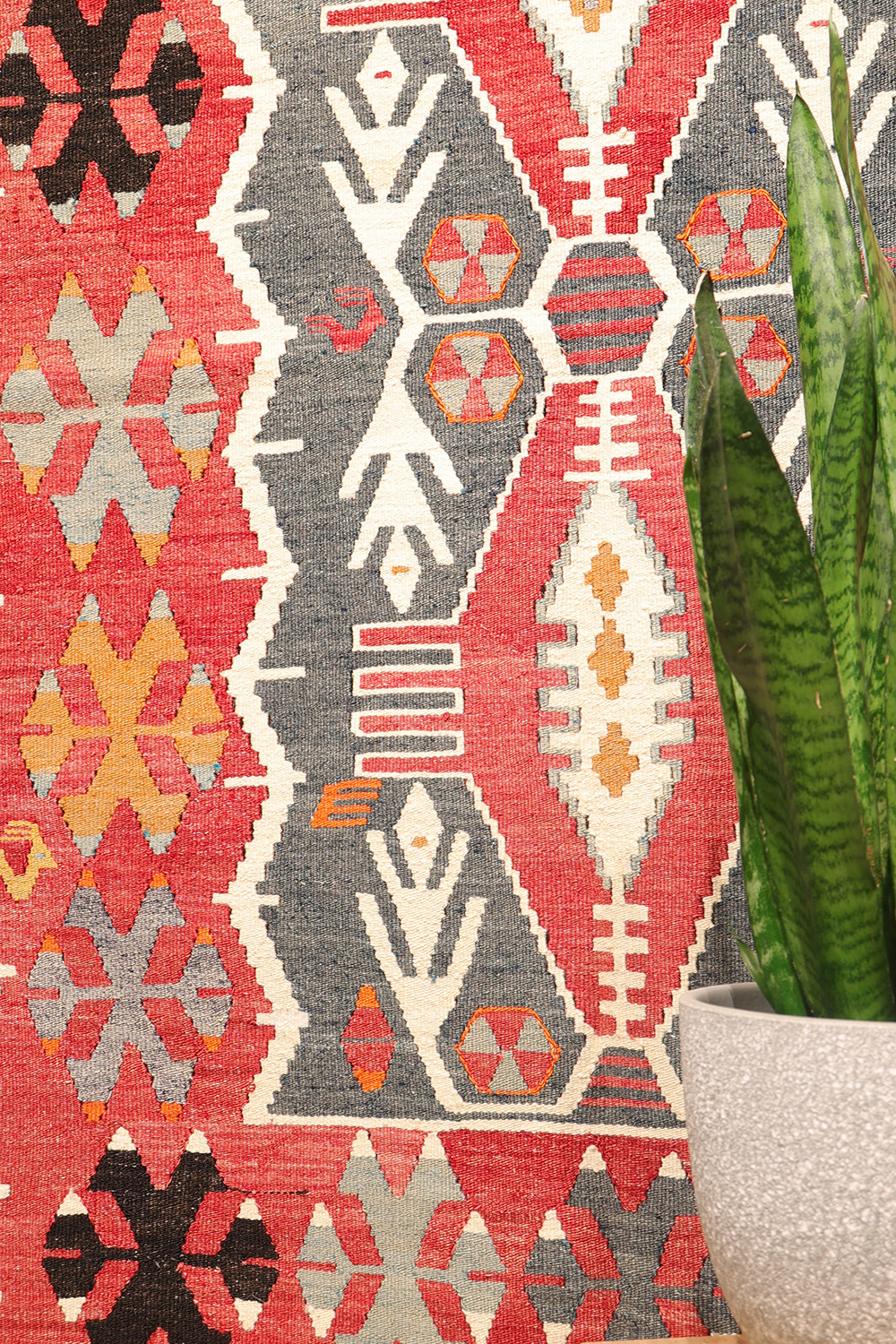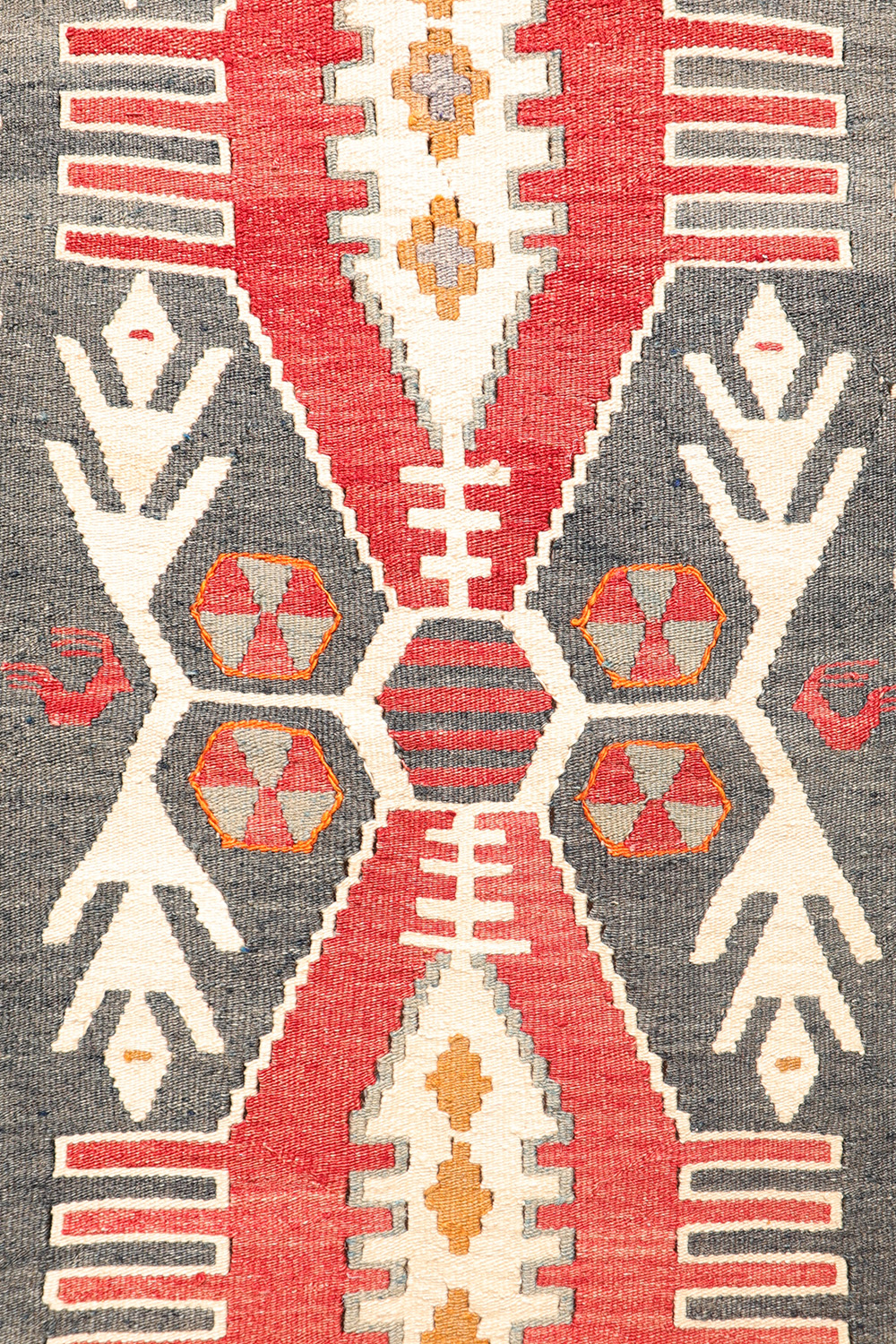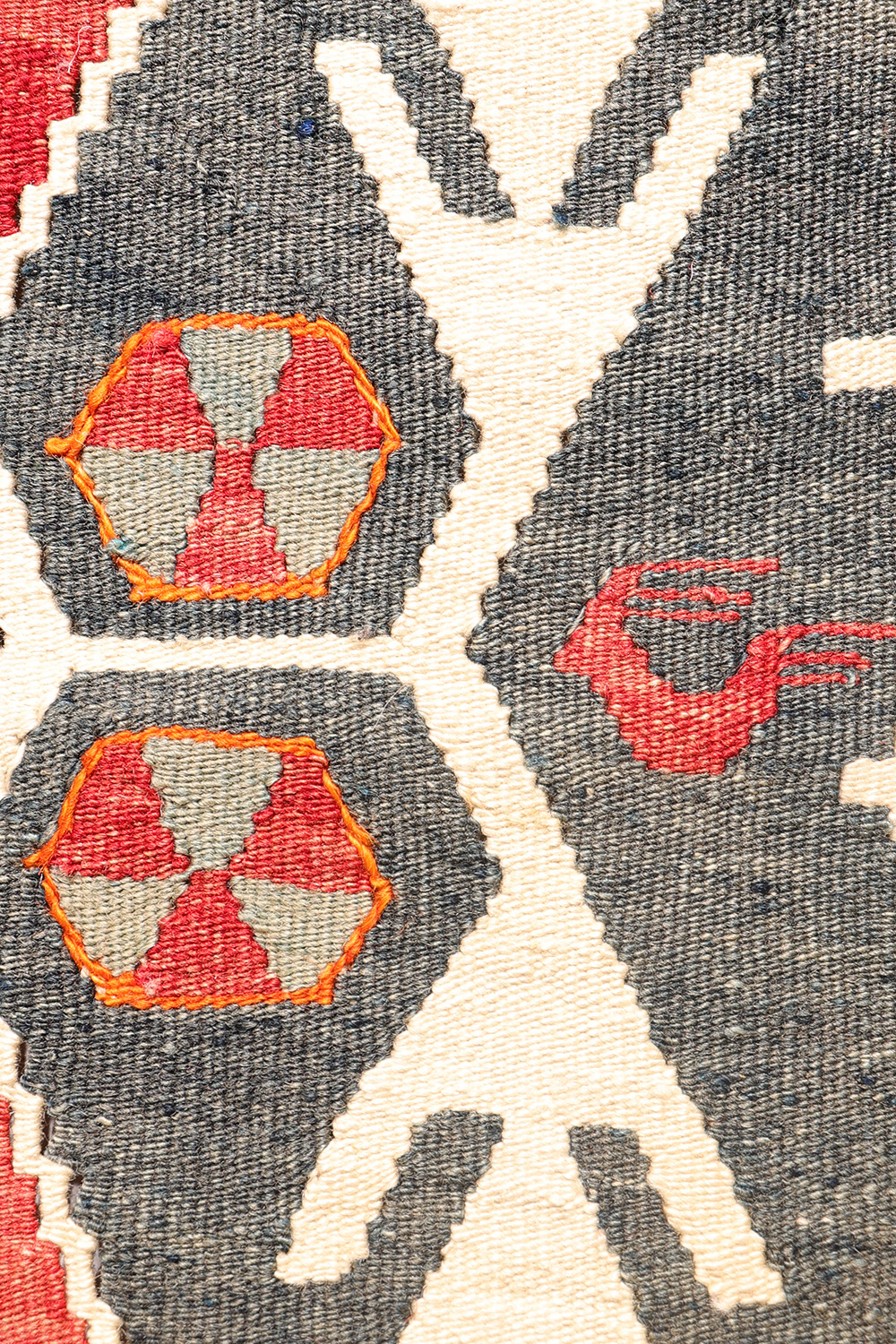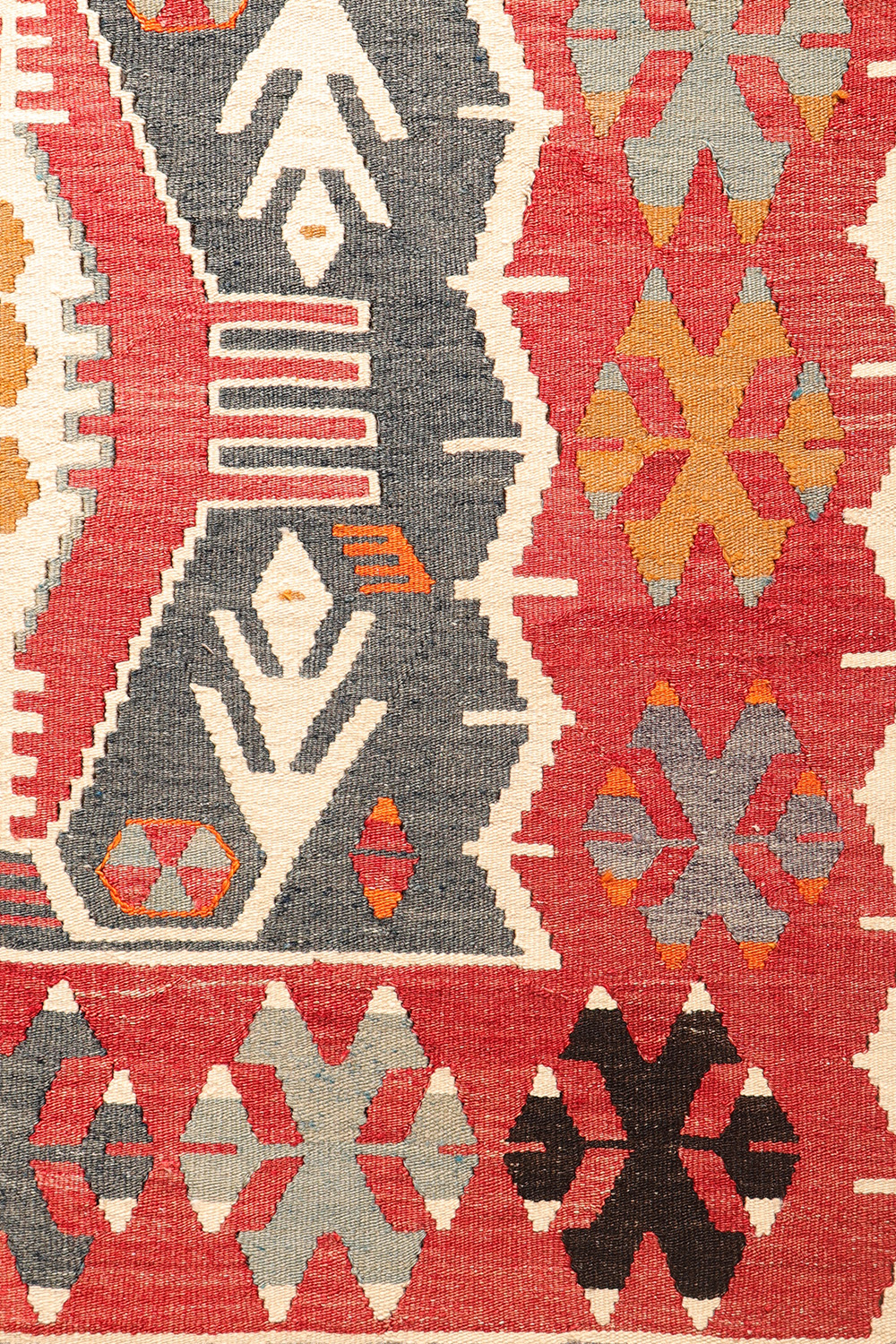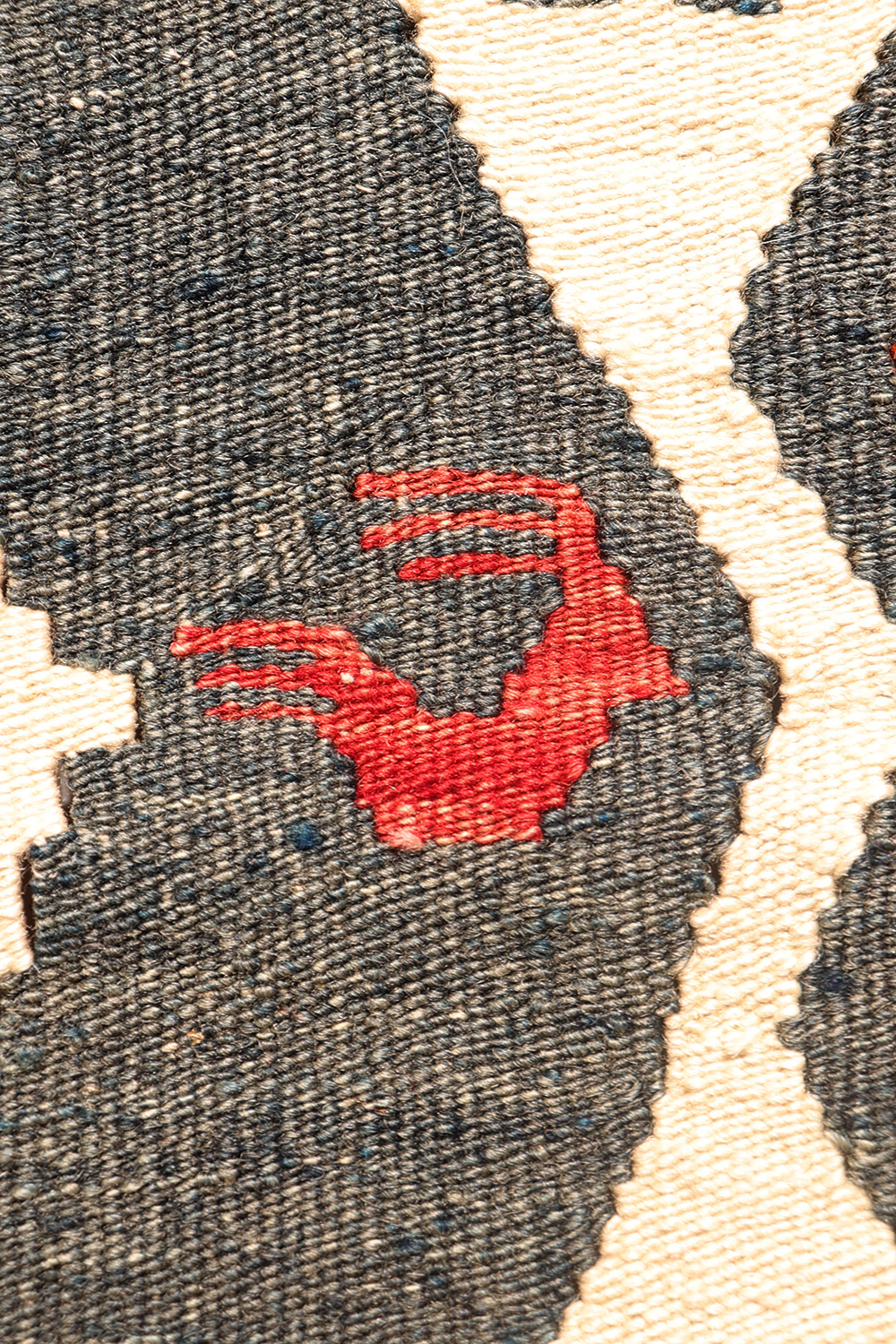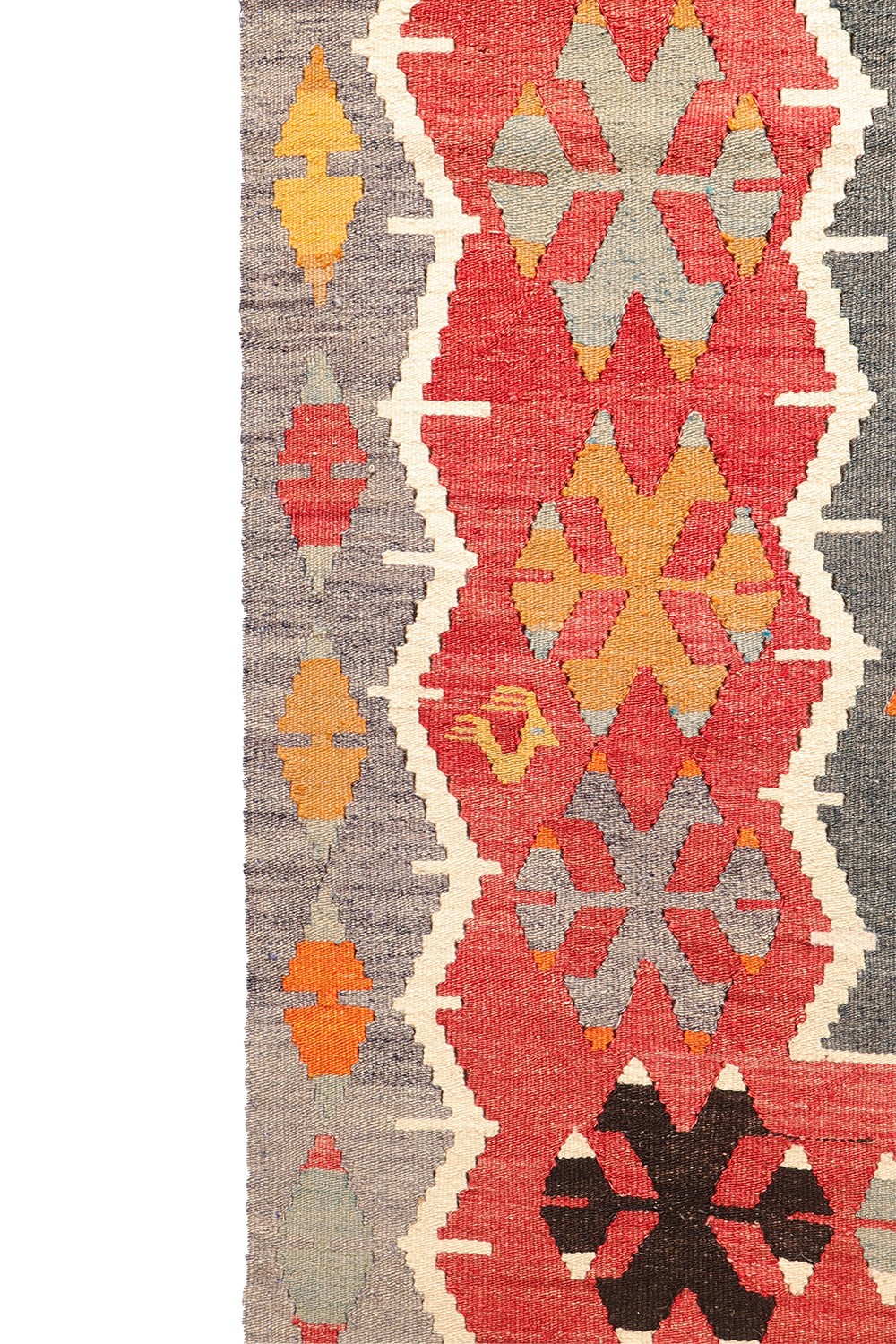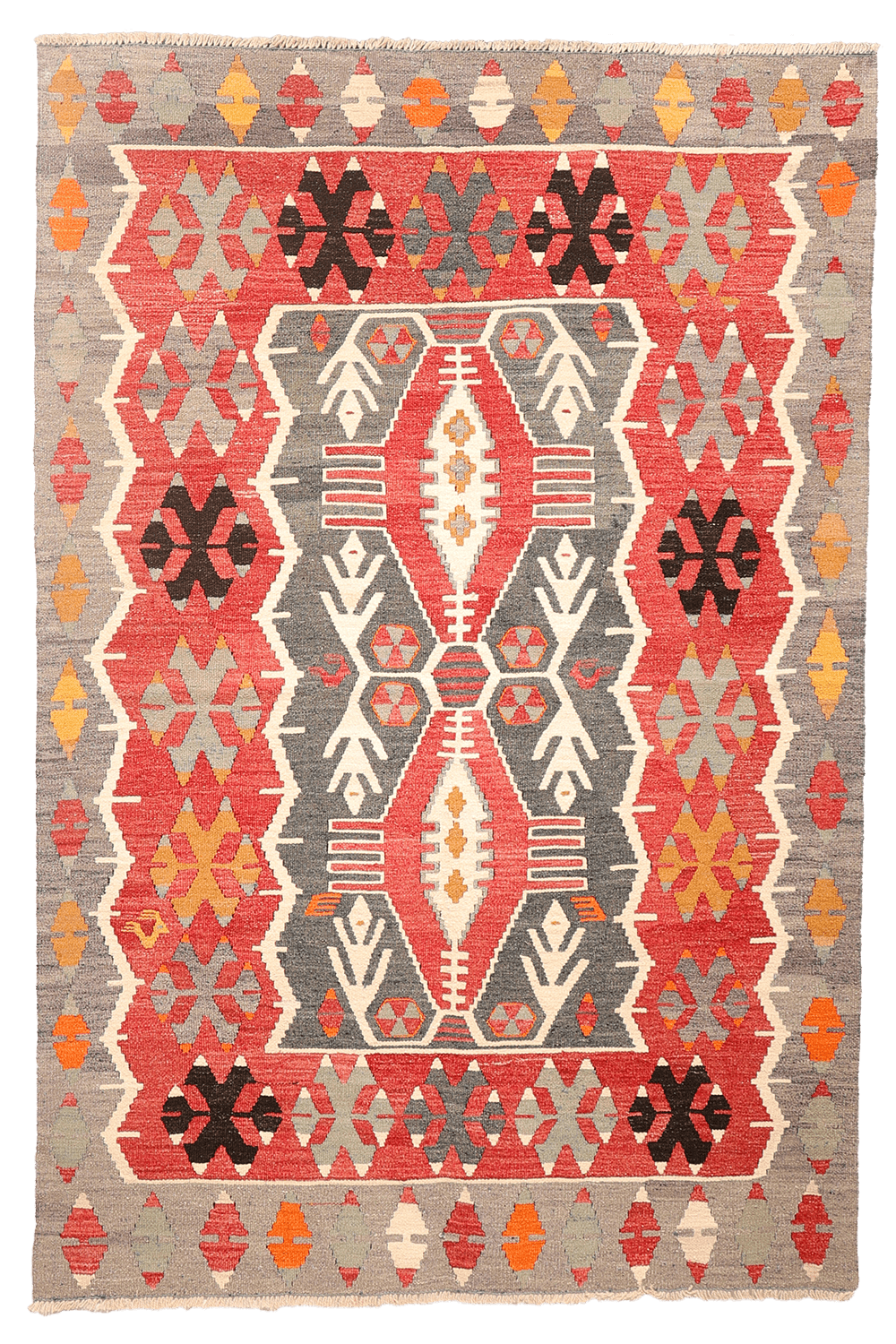750.00 €
A pretty medium sized Esme vintage kilim with a central field with two medallions, surrounded by white tress. The outer greyish blue border has the doble “arrow” motif or “link”. In the center of the kilim, there are two tiny cute little birds.
The overall composition of this kilim is calm and harmonious.
The Link
Bukağı, in Turkish, is a widely used motif that resembles the so-called “nine navels” (dokuz göbek), and whose meaning remains unclear. There are few representations of this motif on other media or in other cultures. It is composed of two arrows with tips pointing in opposite directions, joined by the shaft. Its name refers to a device used to immobilize mules, donkeys, horses, or camels: a rope with a knot at each end. The arrowheads would represent the knots, the shaft would symbolize the length of rope connecting them, and the whole design would form a symbol intended to reinforce group cohesion.
Material: 100% hand-spun sheep wool
Size: 177×117 cms
Origin: Esme, Turkey
Date of weaving: 1980s
Kilims or Gilims are flatwoven textiles with a woollen weft on a woollen, goat hair or cotton warp. There are many different techniques and designs. The weaver normally works within a tradition of techniques, motifs and designs specific to a particular area or ethnic group. The designs relate to her natural surroundings, protection, fertility and the harmony of family relationships. Each weaver adds something from her own creativity and sense of composition. Kilims are often woven as part of a marriage dowry and can be used to create many different objects like storage bags, horse-blankets, baby carriers, blankets and wall and floor coverings.
This kilim was hand-woven on a simple loom by a village or nomadic weaver for her own use. Probably the weaver used wool from her own sheep. The wool was first cleaned, then hand-carded, hand-spun and finally dyed by hand, often using natural dye materials like roots, nuts, berries, fruits, flowers and plants. Kilims from the last quarter of the twentieth century mostly use synthetic dyes. This kilim would have taken many months to complete.
All our kilims selected in the country of origin and are professionally washed and restored before we import them directly from Iran, Turkey and Afghanistan. Natural patina and charming imperfections in design and colour (abrash) are highly valued characteristics of hand-woven kilims.
The Link
Bukağı, in Turkish, is a widely used motif that resembles the so-called “nine navels” (dokuz göbek), and whose meaning remains unclear. There are few representations of this motif on other media or in other cultures. It is composed of two arrows with tips pointing in opposite directions, joined by the shaft. Its name refers to a device used to immobilize mules, donkeys, horses, or camels: a rope with a knot at each end. The arrowheads would represent the knots, the shaft would symbolize the length of rope connecting them, and the whole design would form a symbol intended to reinforce group cohesion.
1 in stock
Additional information
| Weight | 3.3 kg |
|---|
Subscribe and receive the lastest news
